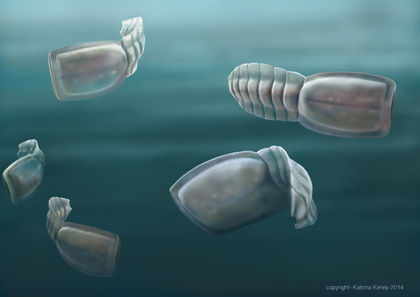A 500-million-year-old blind water creature discovered more than 100 years ago is a distant cousin of humans, Australian scientists say.
Alien-like in appearance, these marine creatures were “filter-feeders” shaped like a figure-of-8. Their strange anatomy has meant that no-one has been able to place them accurately on the tree of life, until now.
In a new paper published in BMC Evolutionary Biology, researchers at the University of Adelaide and the South Australian Museum argue for a change in the way these creatures are viewed, placing them with the same group that includes vertebrate animals, such as humans.
“Although not directly related to humans in the evolutionary line, we can confirm that these ancient water creatures are among our distant cousins,” says the lead author of the paper, Dr Diego Garcia-Bellido, ARC Future Fellow with the University’s Environment Institute.
“They are close relatives of vertebrates – animals with backbones, such as ourselves. Vetulicolians have a long tail supported by a stiff rod. This rod resembles a notochord, which is the precursor of the backbone and is unique to vertebrates and their relatives,” he says.
Although the first specimens were studied in 1911, it took until 1997 for the fossils to be described as a group on their own: the vetulicolians. These fossils have now been discovered in countries all across the globe, such as Canada, Greenland, China and Australia.
The latest insights into vetulicolians have come from new fossils discovered on Kangaroo Island off the coast of South Australia, which the researchers named Nesonektris (Greek for “Island Swimmer”).
“Vetulicolians are further evidence that life was very rich in diversity during the Cambrian period, in some aspects more than it is today, with many extra branches on the evolutionary tree,” Dr Diego Garcia-Bellido says. “They were simple yet successful creatures, large in number and in distribution across the globe, and one of the first representatives of our cousins, which include sea squirts and salps.”
Agencies/Canadajournal

 Canada Journal – News of the World Articles and videos to bring you the biggest Canadian news stories from across the country every day
Canada Journal – News of the World Articles and videos to bring you the biggest Canadian news stories from across the country every day


Aliens ?????????????